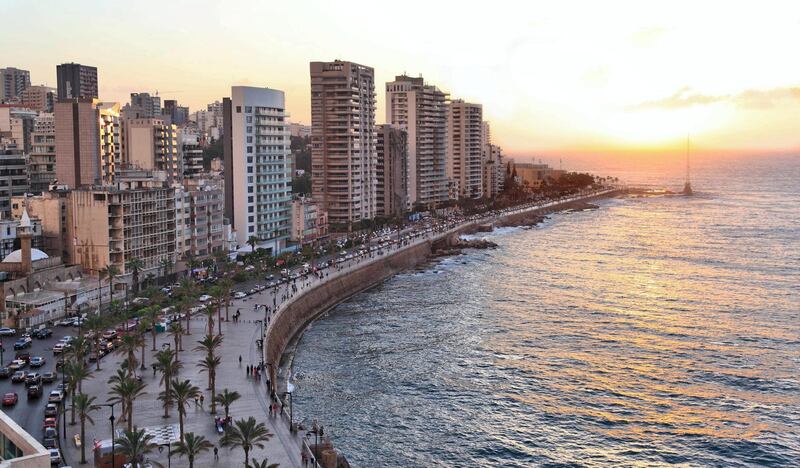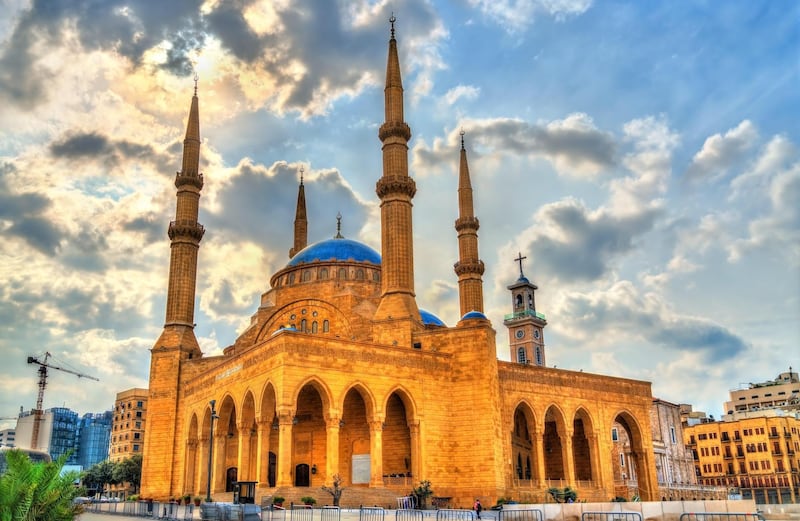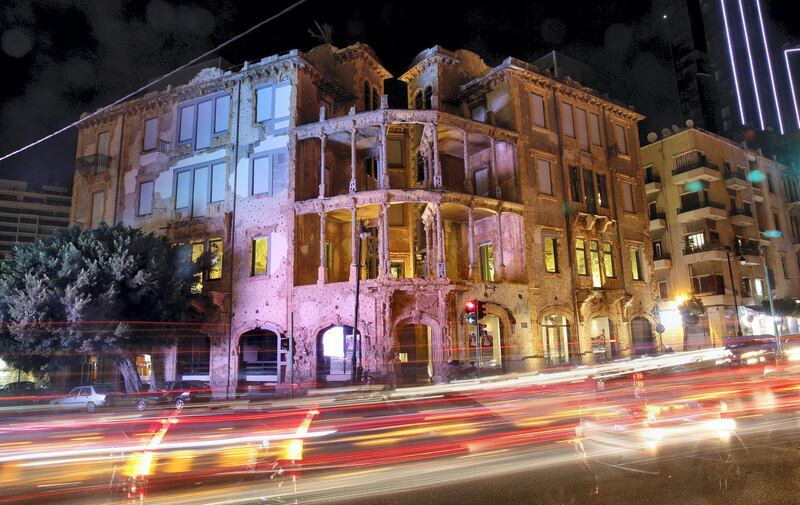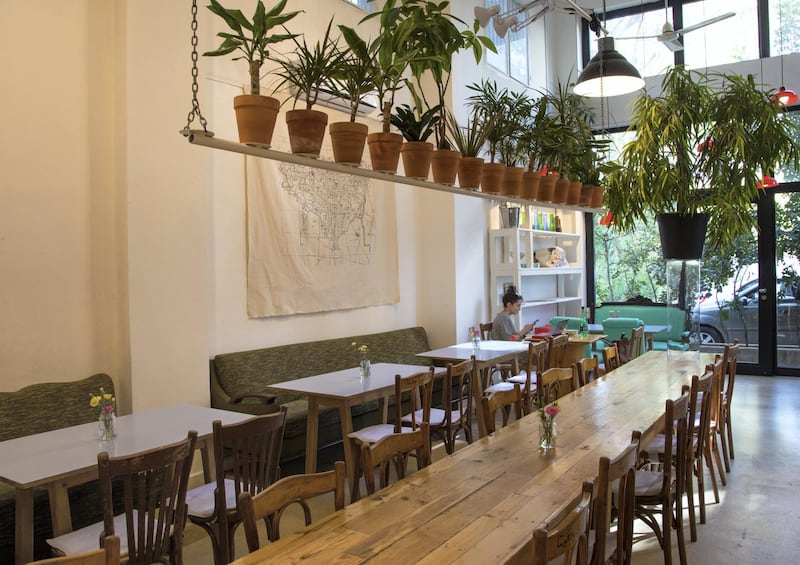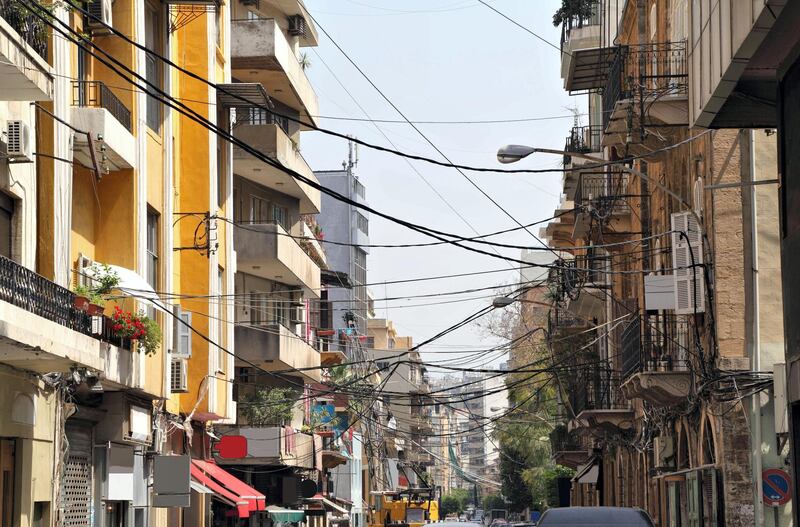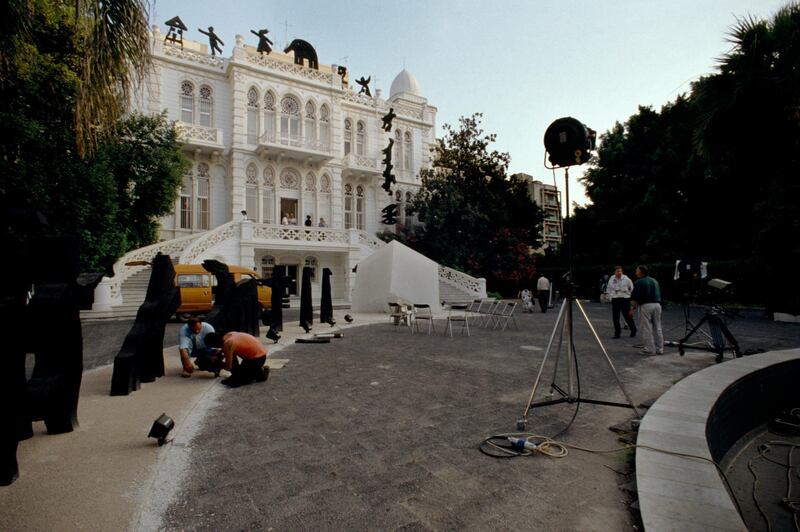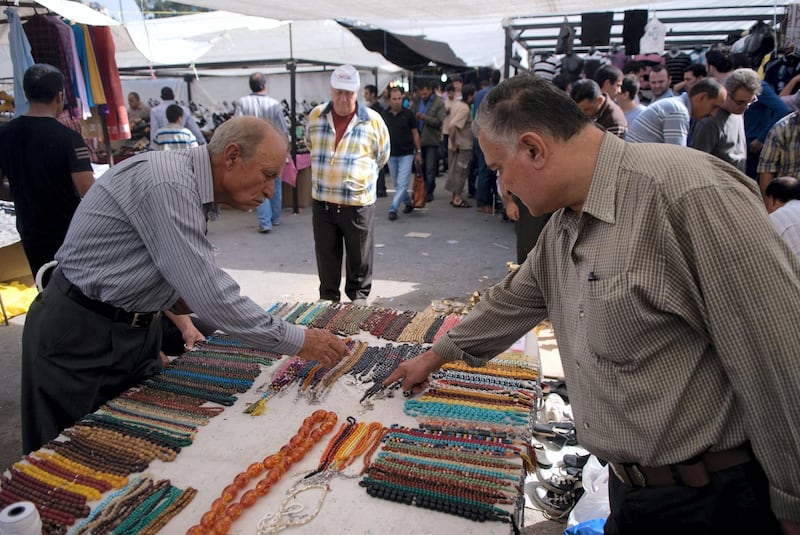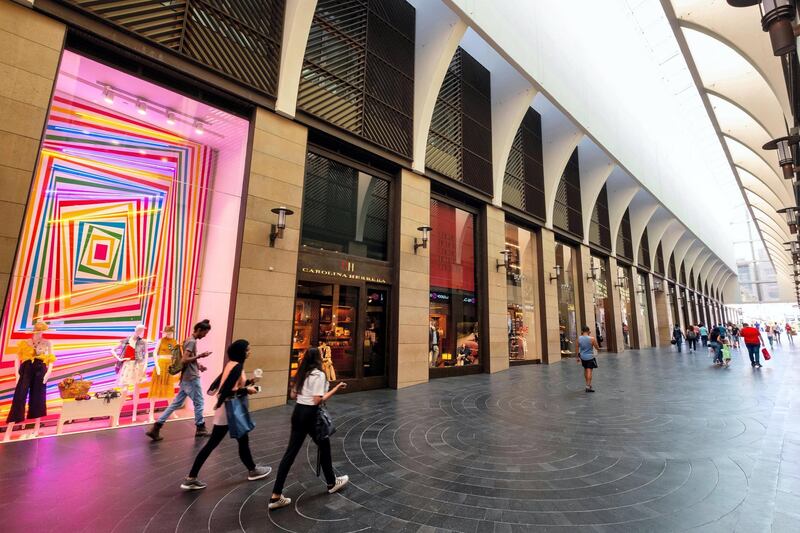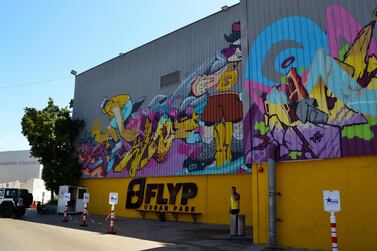As my plane starts its slow-motion descent into Beirut airport, the city below seems almost close enough to touch – a chaotic mix of modern high-rise buildings, ramshackle houses, tall minarets and statuesque church towers, fringed on one side by the azure waters of the Mediterranean and on the other by verdant mountain peaks. Suddenly, we are right above the Corniche, Beirut's iconic clifftop promenade, and my neighbour, one of Lebanon's vast global diaspora who lives in Venezuela, leans past me to grab an emotional glimpse of the country he has not seen for 10 years.
Exploring the cultural scene
This is the ultimate city of contradictions, but now Beirut is buzzing and back on the global map. It may be at the centre of a historic conflict zone and flooded with refugees, but frankly, during my whole trip here, I feel much safer than at my home in Paris, where Gilets Jaunes maraud down the Champs-Elysees every Saturday. The airport is almost in the city centre, and after a frenetic 10-minute, traffic-jammed drive, I immediately plunge into this pulsating metropolis of modern art museums, fashion boutiques and funky restaurants, cutting-edge designers and avant-garde galleries.
The first surprise is how dynamic the cultural scene is here. I begin with a tour of the grand 1900s villas and lush gardens of Sursock, an exclusive millionaire's ghetto that seems caught in a time warp when Beirut was feted as "the Paris of the East". The jewel in the crown is the sumptuous Sursock Museum, an extravagant mix of Ottoman and Venetian styles, with a wedding-cake exterior of swirling balustrades. Inside, though, renowned French architect Jean-Michel Wilmotte has created a series of modern, airy salons to exhibit an impressive permanent collection of contemporary Lebanese art alongside provocative temporary shows.
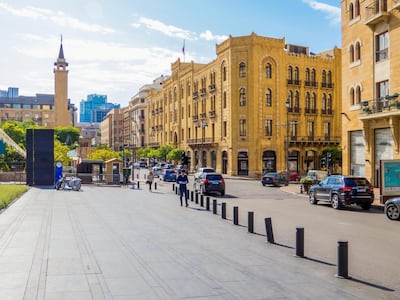
A steep flight of steps, the Route Saint-Nicolas, leads down from Sursock to the bustling Rue Gouraud, heart of another arty quarter, Gemmayzeh. First stop is Plan Bey, an alternative art gallery that offers affordable prints, photos and graffiti stickers by Beiruti artists such as Mazen Kerbaj and Cherine Yazbeck, then it is time for a break of barista coffee and delicious sticky sweets at Ginette, a hip multi-concept store that morphs from a cafe, design and fashion boutique, into an art gallery.
Embracing the arts
Next, we brace the traffic jams for a hair-raising taxi ride to the bright red Aishti Foundation. This is the brainchild of Lebanese billionaire Tony Salame, whose decision to commission a futuristic private museum to showcase his priceless contemporary art collection has put Beirut firmly back on the global art map, alongside similar museums by Francois Pinault in Venice or Bernard Arnault's Parisian Louis Vuitton Foundation.
Aishti covers four floors, currently exhibiting the likes of Julian Schnabel, Lucio Fontana and Cindy Sherman from Salame's estimated 2,000 artworks. It is a venue with a difference, though, as the businessman made his millions retailing luxury fashion brands, so visitors also find themselves in a quite surreal glass-and-metal shopping mall of Gucci, Armani and Fendi boutiques, right alongside the foundation's art exhibitions. I end the day in a relaxed style at the legendary Al Falamanki Cafe, a delightfully decadent rendezvous spot where customers recline on satin sofas, play backgammon and sip scalding mint tea while waiters expertly prepare shisha pipes.
Just next door is the magnificent pastel yellow neo-Ottoman mansion that houses Beit Beirut, a unique museum that everyone coming to the city must visit. The building was situated right on the infamous Green Line, which divided Muslim and Christian Beirut during the civil war, serving as a sniper bunker, and has been deliberately preserved in its crumbling half-destroyed state, complete with bullet and shell pockmarks. A tour of the building is an intensely moving experience and the project's architect, Youssef Haidar, tells me he hopes "it will finally be a step towards replacing the mass amnesia and to come to terms with what has happened in the past".
A taste of Beirut
On my first evening, I have a dinner date at Liza, the ultra-fashionable restaurant owned by Liza Soughayar, who is pretty much the queen of Lebanese cuisine in Paris. In one of the private dining rooms, decorated with dramatic artworks of bombed Beirut buildings by a young Lebanese painter, we taste her signature dishes: the best hummus I have eaten, traditional kebbe nayyeh, lamb tartare and loukoz bel selek, sea bass with tahini. Liza explains how despite success in Paris, she could not resist being part of the renaissance in her hometown. "There is an incredible intensity to create and succeed here."
Like all Beirutis I meet, she has an incredible optimism and enthusiasm for her city, and is immediately making plans for my foodie tour. The next morning, we begin with an unbelievable feast prepared at Al Soussi, Beirut's top street food address. Only open for breakfast, this hole-in-the-wall eatery may be in a backstreet, but the forecourt is packed with Mercedes and Porsches. Two chefs cook each dish as you order, on a single gas burner with a tiny blackened frying pan. Order everything – lamb's brain, confit liver with fried egg, foul, chickpeas and tabbouleh.
Around midday, we head for Mar Mikhael, renowned as a hip nightlife quarter, where Tawlet, a unique project created by celebrity chef Kamal Mouzawak, is only open at lunchtime. Each week he brings in a roster of female cooks from across Lebanon, to prepare traditional regional recipes representing the country's multi-ethnic culture. Choose from a huge buffet of dishes such as tripe sausages, spicy raw beef and minced lamb croquettes.
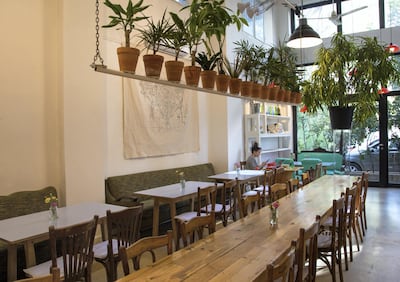
After an early evening stroll along Mar Mikhael's Armenia Street, lined with hipster bars, cafes, clubs and bistros that could be in Barcelona or Berlin, we sit down for dinner in the elegant dining room of Villa Clara. This is a symbol of what the future of Beirut could be. French chef Olivier Gougeon and his Lebanese wife Marie-Helene have lovingly restored a grand 1920s villa into a romantic design hotel.
In the restaurant, Gougeon's dishes are unmistakably French, but he uses fresh, seasonal Lebanese products that are often organic. Baby squids are gently fried in gluten-free flour then served on a bed of pea puree, while local frogs' legs are classically cooked with garlic and parsley. And the steak tartare is pure theatre, with the chef chopping and dicing the tender beef right at the table.
Shop 'til you drop
I end my trip by spending a day checking out the reconstructed city centre, known simply as Downtown, the luxury side of Beirut so loved by influential guidebooks and international style magazines. Local fashionistas and wealthy tourists shop 'til they drop at Beirut Souks, which in reality is an exclusive mall filled with brands such as Saint Laurent, Jimmy Choo and Kenzo.
Rather than joining the chic crowds vying for a lunch table at the latest must-be-seen-at dining hotspot, Em Sherif Cafe, I head off to check out more original outlets such as Bokja, the atelier / workshop where talented designer Huda Baroudi creates quirky recycled furniture that is the talk of Milan's Salone del Mobile.
Then at Orient 499, I discover a magical Aladdin's cave of interior decor and exotic Oriental handicrafts; a maze of sumptuous salons, each one filled with treasures, ornate mirrors, traditional brass stools, bewitching gold and silver sculptures, sepia photos and vintage Arabic movie posters.
Discovering Downtown
Downtown is also the place to put into perspective Beirut’s unique 5,000-year history as one of the world’s oldest cities, a heritage that stretches from the Phoenicians and Romans to Arabs, Ottomans and the French, through to more recent troubled times, when buildings were reduced to rubble by decades of invasions and civil war. But there are few signs of that destruction when I begin a tour of the immense Blue Mosque, built as recently as 2008.
Surrounding the mosque are a host of far more ancient monuments that illustrate the special harmony of races and religions that Lebanon somehow manages to delicately balance. Right next door is the dignified Maronite Cathedral of Saint George, while behind a maze of ruined Roman baths is another church, again dedicated to Saint George, though this time for Greek Orthodox worshippers.
A 10-minute stroll eventually brings me out at the Corniche, where every evening at sunset all of Beirut's diverse elements somehow come together. Nike-clad teenagers jog by, listening to Arab rap on their iPhones, as families take the air and walk dogs and skateboarders zigzag in between.
Everyone buys crunchy fava beans, raw carrots and tangy lemon slices from friendly street vendors, and while glamorous locals hang out for a dip at the 1960s Sporting Club's beach, I enjoy a perfect end to the day at the Bay Rock Cafe. With its romantic view of the Corniche's famous Pigeon Rock, I settle down to watch the sun set, accompanied by a generous plate of mezze.
